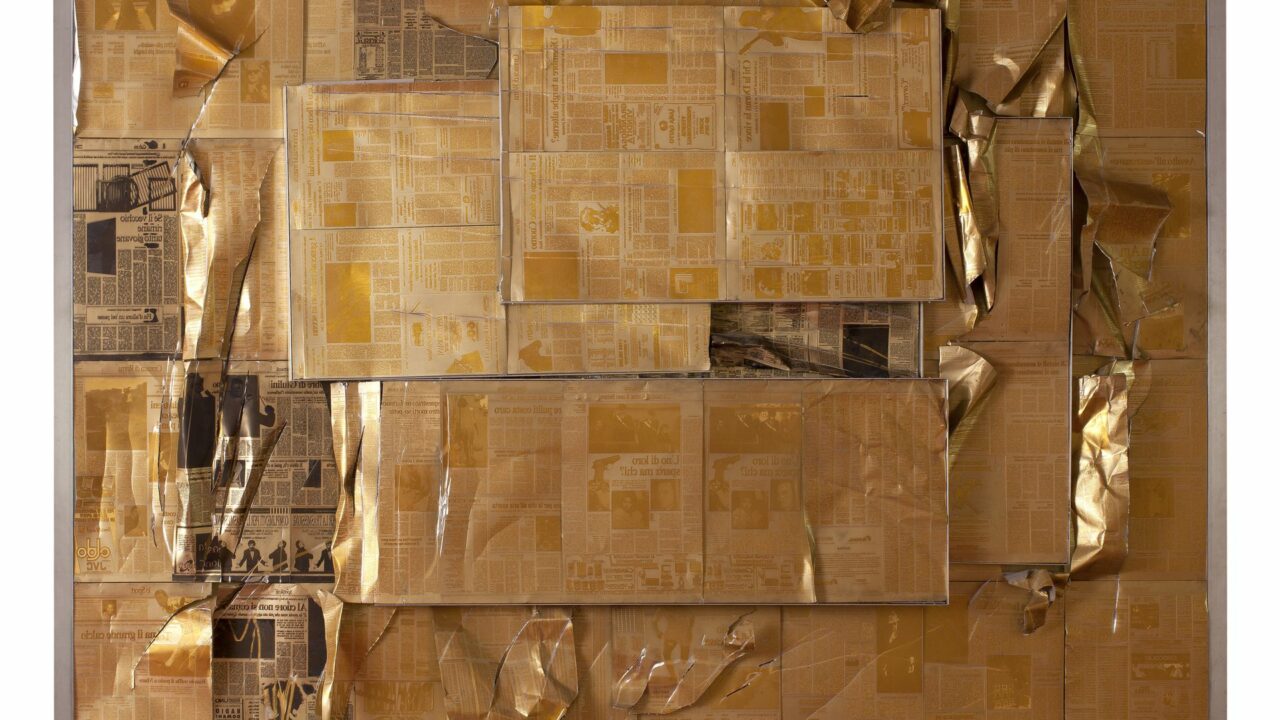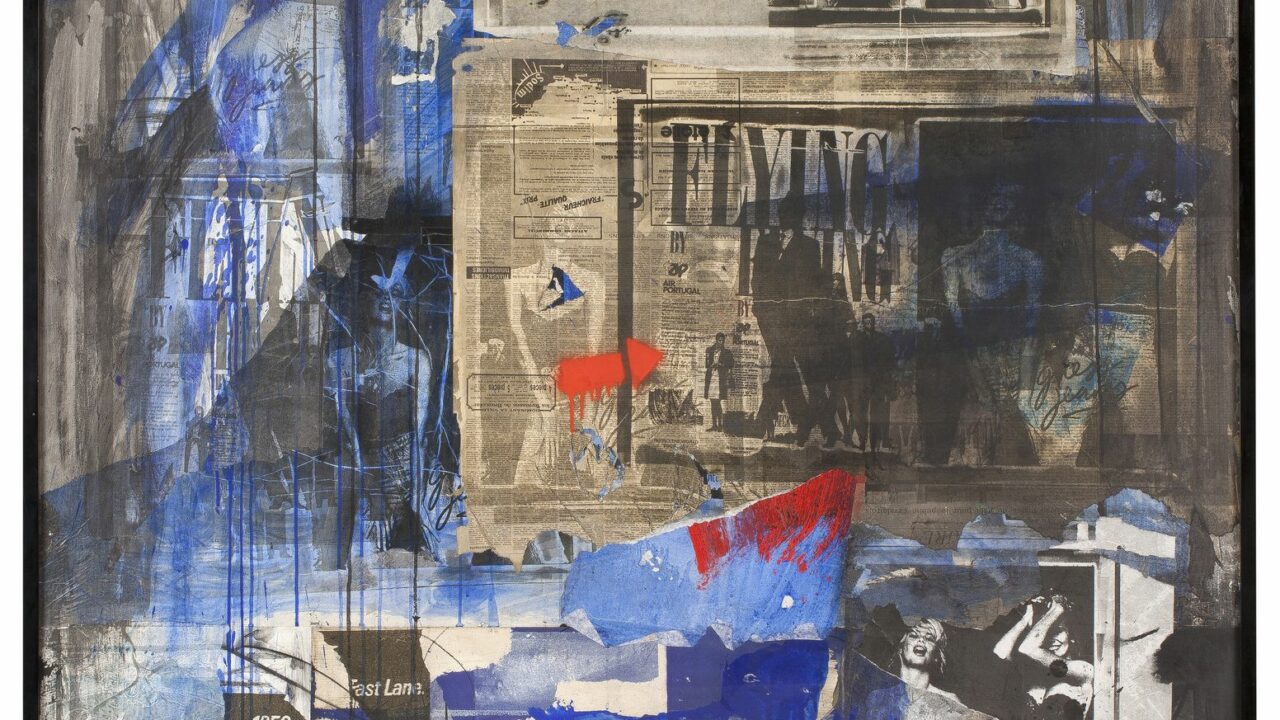5. Mass media and democracy
The relationship between power, the media and the public is an issue that beats strongly in the works of Olaf Metzel and Antoni Clavé. Metzel’s piece, with a more explicit and provocative tone, operating the conversion of press information into a sort of gold plated idol.
Artworks

Olaf METZEL : Il Messagero, mercoledi 12. Ottobre , 1989 – On display in Visitors’ area, Brussels

Antoni CLAVÉ : New York II, 1989 – On display in Visitors’ area, Brussels

Anna BAUMGART : Wall, 2008 – On display in Visitors’ area, Brussels



The power to inform – but also to distort – the public’s perception and opinion of everyday events is a recurring theme in the art of Olaf Metzel. The large panel Il Messagero, mercoledì 12. October 1988 (1989), consists of metal matrices for printing the eponymous Italian newspaper of the titled date. The central issues engraved in the matrices – kidnappings, terror, tragedies – have been rendered almost indistinguishable to today’s distanced onlookers by the intricate cracked surface of this relief aluminium work.
Antoni Clavé‘s painting conveys an image about the value of press news and its diffusion throughout the urban space. New York II (1989) alludes to the dissemination of culture, its constant cycle of use, rapid wear and replacement. Pop poetics and the use of collage – newspaper and magazine imagery directly applied onto the surface – are in tune with the artistic production of the American Robert Rauschenberg in the sixties: images interwoven in a palimpsest-like arrangement and punctuated by gestural strokes of luminous pigment.
Reference to the news, embodied in newspapers by means of text and photographs, also underpins the concept of Wall (2008), in which the multimedia artist Anna Baumgart stages a distressing and tragic real-life situation, drawn from a specific point in European history.
Etched in capital letters on the leg of one of the figures is the inscription Reuters Forum – news agency – to indicate the iconographic origin of the group of sculptures. Indeed, the visual referent is a press photo immortalising a group of Berliners fleeing after being evacuated from their homes in August 1961. The day of the photograph, the wall that bisected the city was becoming ever harder to cross and turning into that deadly barrier which would symbolise the deep ideological divide between the Soviet bloc and the West for the three decades to come. Until 1989, when the wall was torn down, a historic moment captured in some of the photos that make up Frank Thiel’s series Berlin (1990)
Baumgart references thephotojournalistic origin of her sculptures by splitting each person into two clear halves: grey gradations on the front and solid white sections at the back. This distinction reflects the two-dimensional origins of the group and its transposition from a photograph to a three-dimensional space.
Although the sculpture is far more abstract than the original photo and does not show the individuals’ faces in detail, Baumgart lends the work remarkable realism in recreating the objects they are carrying, including the texture of the boxes and bags. The feeling of urgency and fear, betrayed by the positions and gestures of the Berlin citizens in the photo, was softened in the resin figures, a material widely used by seminal contemporary figurative sculpture names, such as Juan Muñoz or Keith Edmier.